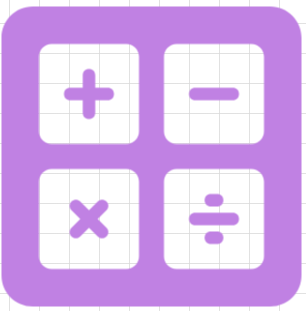Subtraction, a fundamental operation in mathematics, involves taking one number away from another. While it may seem simple at first glance, subtraction has a set of properties that govern how numbers interact during the operation. Exploring these properties provides a deeper understanding of the concept and showcases the consistency and structure within mathematics. Let’s dive into the properties of subtraction, peppered with illustrative examples.
Definition of Subtraction
Subtraction is the operation of finding the difference between two numbers or quantities. If you have 10 apples and you give away 3, you’re left with 7 – this process is subtraction. Symbolically, a and b are two numbers, and a > b, then:
a – b = c
Here, c is the difference or result of the subtraction.

Check Out Our Free Subtraction Worksheets
Properties of Subtraction
a. Non-Commutative Property:
Subtraction is not commutative. This means that changing the order of the numbers (or terms) will change the result.
a – b ≠ b – a
Example: Consider numbers 5 and 3.
5 – 3 = 2
3 – 5 = -2
The results are different, confirming the non-commutative nature of subtraction.
b. Non-Associative Property:
Subtraction is not associative. This means that when dealing with three numbers, the manner in which they’re grouped (or the order in which subtraction operations are done) affects the result.
a – (b – c) ≠ (a – b) – c
Example: Take numbers 7, 4, and 2.
7 – (4 – 2) = 7 – 2 = 5
(7 – 4) – 2 = 3 – 2 = 1
The results differ based on the grouping, illustrating subtraction’s non-associative nature.
c. Existence of Additive Inverse:
Every real number has an additive inverse. For any number a, its additive inverse is -a, such that a + (-a) = 0.
Example: The additive inverse of 6 is -6 because 6 + (-6) = 0.
When applied to subtraction, this property helps us understand that:
a – b = a + (-b)
d. Subtraction of Zero:
When you subtract zero from any number, the number remains unchanged.
a – 0 = a
Example: 8 – 0 = 8
Using Properties for Simplification
Subtraction properties, especially the idea of additive inverses, are often used to simplify algebraic expressions or solve equations.
Example: To solve for x in the equation x – 4 = 5, we can add 4 to both sides (utilizing the additive inverse property) to get:
x = 5 + 4 = 9
Applications in Real-Life Scenarios
a. Budgeting:
When managing finances, understanding subtraction is essential. If you start with a certain budget and spend part of it, subtraction helps determine remaining funds. The non-commutative property reminds us that spending $10 on a $50 budget is different from having $10 and spending $50.
b. Time Management:
If a task takes 3 hours out of an 8-hour workday, subtracting gives us the time left in the day. This concept is vital for planning and ensuring efficiency.
c. Distance and Navigation:
If you’ve traveled 60 miles of a 100-mile journey, subtraction provides the remaining distance. Such calculations are commonplace when using maps or GPS.

Free Math and English Worksheet Generators
Challenges and Misconceptions
a. Negative Results:
Many beginners struggle with results that yield negative numbers. It’s essential to understand that these numbers are valid and have meaningful real-world interpretations, such as owing money or temperatures below freezing.
b. Order Matters:
Due to the non-commutative property, it’s crucial to ensure numbers are in the correct order when subtracting, as flipping them can yield different results.
Summary
Subtraction, while fundamental, showcases the inherent structure and logic in mathematics. Recognizing and understanding its properties not only enhances computational skills but also ensures accurate and meaningful interpretations, especially in real-world scenarios. Whether we’re budgeting, planning our time, or navigating, the properties of subtraction underpin our calculations and decisions. It’s not just about taking away numbers; it’s about understanding the deeper relations between them.